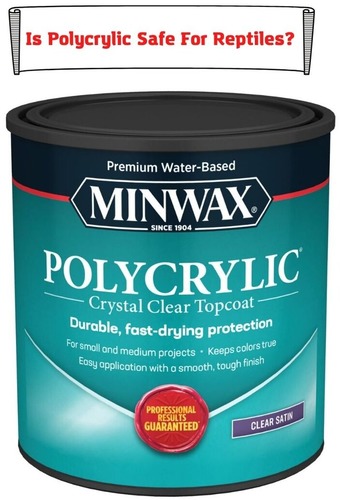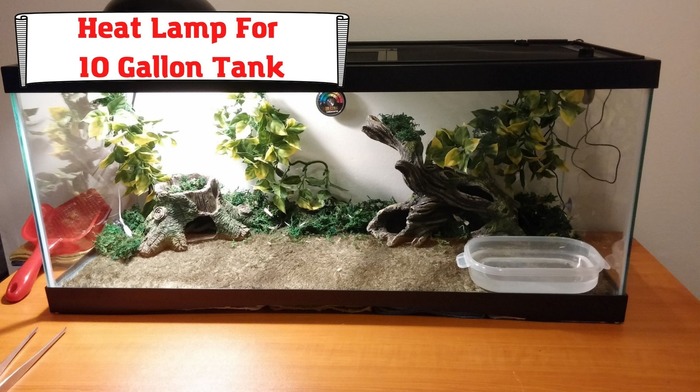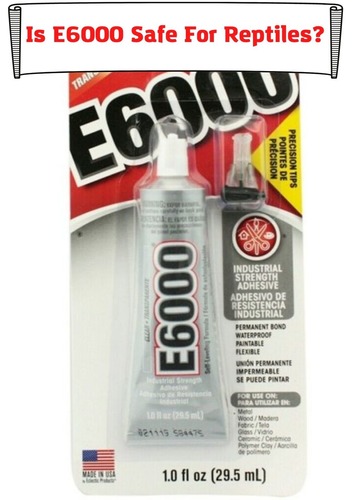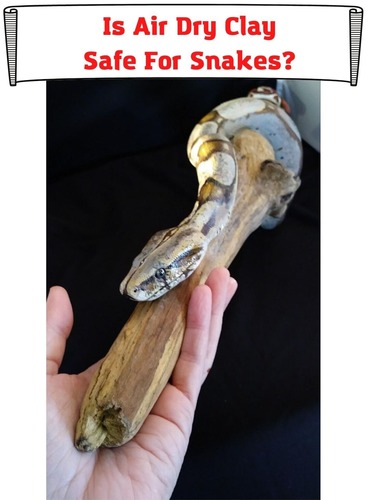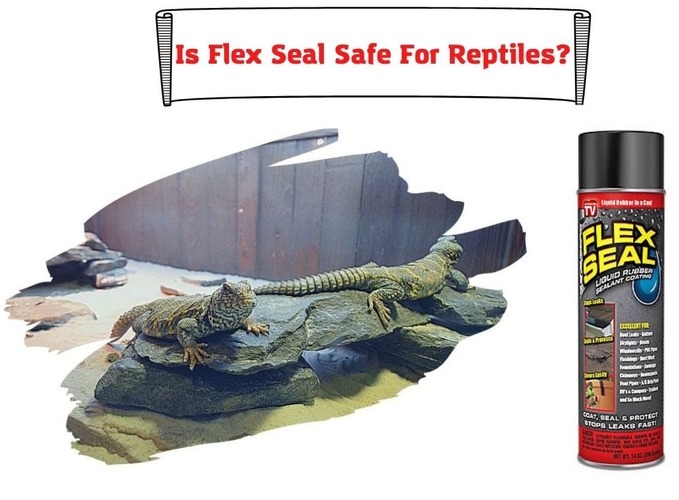
Building a reptile enclosure is one thing. Making it safe for the reptile is another. The construction process of reptile enclosures usually features sealants like Flex Seal. These sealants are made with toxic chemical compounds that could prove fatal to the life of your reptiles. Perhaps you have wondered, “Is Flex Seal safe for reptiles?”
This piece discusses the safety of Flex Seal for your reptiles.
After reading this article, you will understand the instances when Flex Seal can be dangerous for your reptiles, how to make Flex Seal safe for your reptiles, and great tips on how to seal your enclosure safely.
Flex seal
Flex seal is one of the numerous American non-metallic substances used for adhesion. It is a product used for surface bonding that possesses enough internal strength.
The safety of your Reptiles with Flex Seal
Usually, many chemical products with a high level of volatile organic compounds are used by humans daily. They are often applied with safety measures and protective clothing. The toxic odors also go away once the sealant is fully cured.
Flex Seal is a fluid spray used to remove moisture and air. It does this by evaporating the moisture during its curing process. This makes it suitable for outdoor use only. Flex Seal is a liquid sealant and works well to seal joints, surfaces, and even as a barrier for pipes. It is often used as a liquid spray.
But overexposure to the sealant before it is fully cured may cause problems for your reptiles. Flex Seal can be dangerous for your reptiles if you fail to note how toxic the chemical adhesive is.
Observing Safety Measures with Flex Seal for Your Reptiles
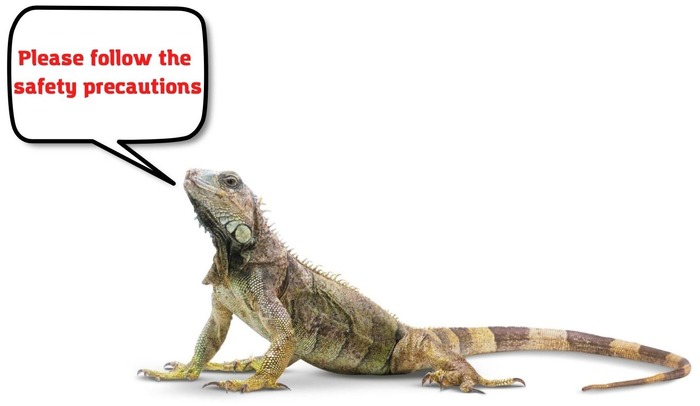
Flex Seal is a solvent-based product. It would be best to ensure that the workspace and the enclosure it is used on have constant and adequate ventilation. This is important because Flex Seal cures by solvent evaporation. It should therefore not be used indoors because of its solvent odor.
Overexposure to your reptiles should be avoided. Put them somewhere safe and far from the workspace. This is important because they could become susceptible to the following health challenges.
Breathing difficulties from inhaling Flex Seal fumes
Unlike fish and amphibians, reptiles do not breathe through their skin. They make use of their lungs for respiratory functions. They all have various ways of moving air through their lungs. The smell from the chemical compounds used to make sealants may cause respiratory challenges for you and your reptile, and you are both exposed to it for a prolonged period. It would be best to use protective breathing equipment during application. It would also be best to keep your reptile out of the range of the toxic fume until it has fully cured.
Skin injuries from contact with Flex Seal
The skin of reptiles is not distinct severable structures. Although they are usually scaly and dry, they form the outermost layer of the reptile’s skin. Exposing the sealant to your reptile’s skin can happen when you erroneously put the reptile in the enclosure before the Flex Seal fully cures. Another way your reptile could be exposed to the sealant for long is when you put it on clothing that has already been contaminated with Flex seal. This could negatively affect the proper functioning of the skin of your reptiles to hold in moisture. It could have grave implications for some select species.
Digestion problems from consuming Flex Seal
Curiosity is an instinct of reptiles and many other pets. Flex Seal being liquid could be mistaken for water or food by your reptile. If ingested, this could cause serious health problems for your reptile and even lead to its death. It would be best to keep the seal away from your reptiles’ reach. Ensure that they are well covered and kept away to avoid a case of ingestion.
How To Use Flex Seal
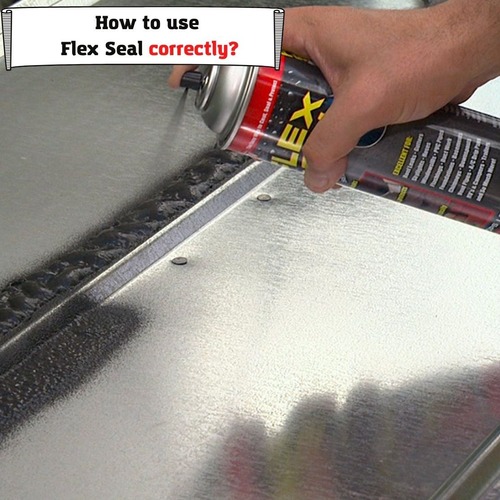
The great news about Flex Seal is that it is liquid and can be rolled, brushed, dipped, or poured and spread. Below are instructions on how to apply Flex Seal.
Managing your workspace
Ensure that the area you intend to use for the exercise has adequate ventilation. You could use your room with open windows, and a working fan switched on to keep the air flowing. You could also use your backyard. Your garage would be a great workspace, but it would be best to keep the door open to aid ventilation.
Cover your work area with waste papers or a drop cloth to prevent your Flex Seal from reaching unwanted areas. It would also be best to do the project on a dry, sunny day.
Wipe The Surface
Wiping the surface is important because a dry, dirt-free surface will enhance the sealant’s effectiveness, although Flex Seal works well on wet surfaces too. You may have to sand off any rust on the surface to improve adhesion if there is any. Wipe the clean surface dry.
Apply Flex Seal
It is recommended that you vigorously shake the Flex Seal can for some minutes. After shaking the spray can, target its nozzle at the selected area and apply the sealant in a sweeping motion. Spray the sealant some 7 to 10 inches with a specific focus on the crevices and the area around them. The coat usually dries in 24 hours, but it would be best to wait up to 48 hours for the coat to fully cure before topping a new coat.
Ways To Seal Your Enclosure Safely
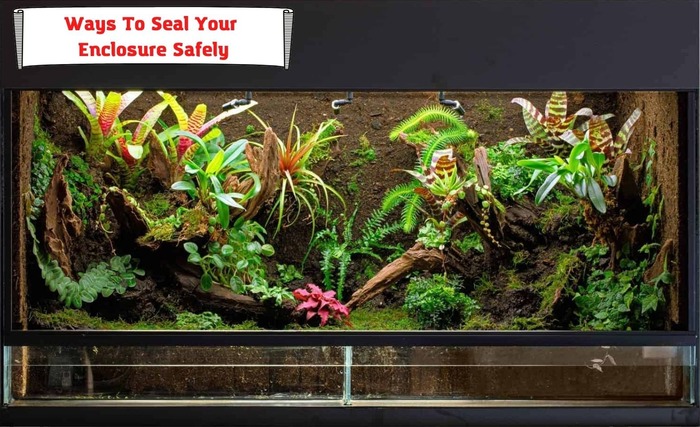
For your reptile enclosure, it would be best to start with the edges and corners of the chamber. Those are the most critical parts where leaks and holes could be found. Rollers may not be a good option for reaching the edges and corners of the enclosure. Brushes, however, are a better choice to cover the edges and corners of the reptile enclosure with the sealant. Sprays work well too. Apply Flex Seal for the first coat.
After spreading the first coat, it would be best to wait for 48 hours for the first coat to fully cure before applying Flex Seal again for the second coat. Make sure to coat the edges and the corners of the enclosure. Stroke in one direction so that you do not leave brush marks. After coating for the second time, you have to let it cure again for 48 hours before applying the third coat. Coating three times is enough, but if you feel like adding a fourth coat, you will have to wait another 48 hours to top it.
Do not forget that you have to leave the reptile enclosure in a well-ventilated area so that the curing process can occur satisfactorily.
You can reinforce the sealing of the edges and corners of the enclosure with silicone caulking. Silicone caulk is a great waterproof sealant that will not break in colder temperatures. It can also withstand hotter temperatures and will lockout. It is safe for your reptile and can last for up to 20 years.
Before using silicone caulk, keep in mind that it has a relatively long drying period. Also, just like Flex Seal, it produces toxic fumes that can cause health issues for you and your reptiles during installation. You must work in a ventilated space during the application.
After the application, it would be best to protect the enclosure from moisture for up to a week to cure the silicone caulk. Apply the caulk to the edges where the woods of surfaces of your reptile enclosure meet.
Ensure that the silicone caulk product you opt for is a hundred percent silicone. A silicone caulk product that is not a hundred percent silicone will be susceptible to damage from water.
However, if you do not wish to use silicone caulk, Flex Seal will keep your reptile enclosure in good condition. It will work perfectly without the silicone caulk. Silicone caulk is only recommended for added protection.
After letting all the sealants dry, cleaning the reptile enclosure is the last step to making it safe for your reptiles. To do this, use a 10-1 water bleach solution. The solution should be 10% bleach, and the rest should be water. Spray this solution inside the enclosure and let it sit for 10 to 20 minutes. After that, wipe the solution off the enclosure, and it is safe for your reptiles.
Final Thoughts
Flex Seal is a great sealant for blocking out moisture from your reptile’s enclosure. However, the toxic smell of the chemicals used to produce it can cause health problems for your reptiles if you let them into the enclosure too soon. The enclosure must be allowed to dry well at least for 48 hours after the application of Flex Seal before you can let your reptiles in.
Adding silicone caulk to increase the strength and durability of the enclosure safely is a matter of choice. Flex Seal works perfectly, but you may use silicone caulk for added protection, especially for the edges and corners where the surfaces meet.
Cleaning the enclosure right after the curing process with a 10-1 water bleach solution is important. This will eliminate any bacteria or other threatening microorganisms that may have settled in or on the enclosure during the curing process.
- Dubia Roach Egg Sack: How To Understand if It’s Healthy? - January 2, 2023
- How To Feed African Dwarf Frog While on Vacation? - December 26, 2022
- Baytril for Bearded Dragon: Here’s What You Should Know - December 19, 2022
